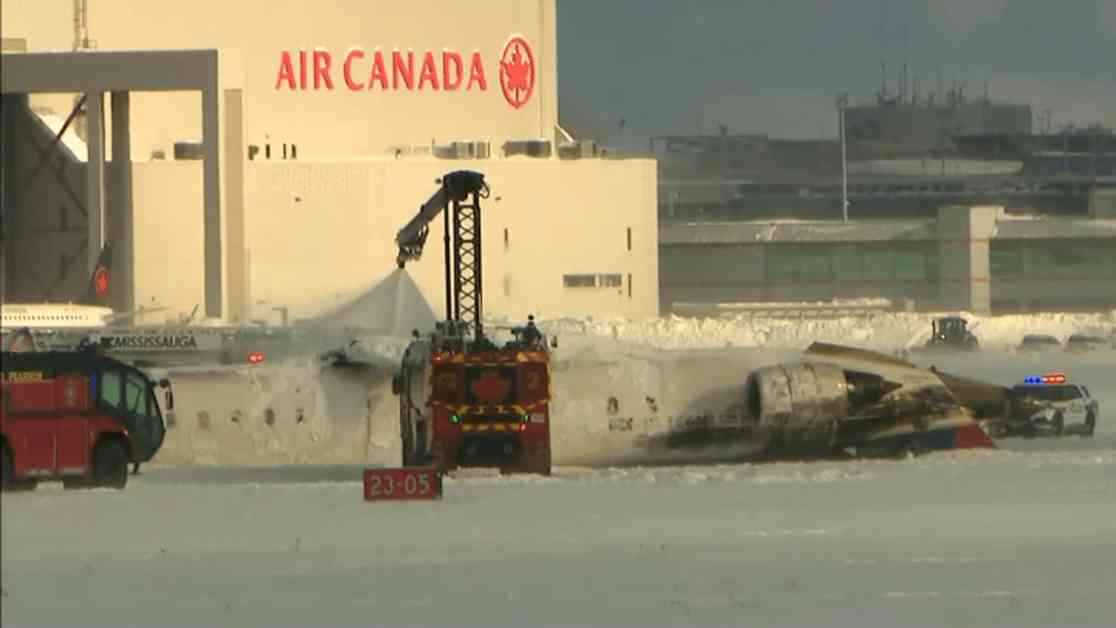A Delta Air Lines flight from Minneapolis to Toronto Pearson International Airport ended in chaos and tragedy as 15 people were injured upon landing. The incident, which occurred around 2:45 p.m., left many shaken and emergency responders scrambling to assist those in need. This unexpected turn of events has left many questioning the safety of air travel and the factors that may have contributed to this harrowing experience.
Emergency Response and Injuries
As the Delta Air Lines flight approached Toronto Pearson International Airport, disaster struck, causing the aircraft to crash upon landing. According to reports, 12 individuals sustained minor injuries and were promptly transported to nearby hospitals for treatment. However, the situation took a dire turn for a man in his 60s and a woman in her 40s, who were airlifted to local trauma centers in critical condition. Additionally, one child was rushed to a children’s hospital with severe injuries, highlighting the gravity of the situation.
Lawrence Saindon, a superintendent for Peel Regional Paramedic Services, confirmed the extent of the injuries, shedding light on the severity of the incident. The scene at the airport was chaotic, with emergency teams working diligently to ensure that all passengers and crew members were accounted for. The aftermath of the crash left the aircraft in a precarious position, as images circulated on social media showed the plane overturned on the runway, a stark reminder of the fragility of air travel.
Investigation and Safety Concerns
Following the crash, the Federal Aviation Administration (FAA) and the Transportation Safety Board of Canada swiftly responded to the scene to launch an investigation into the circumstances surrounding the accident. The FAA reported that Delta Air Lines Flight 4819, operated by Endeavor Air, was the aircraft involved in the crash, carrying a total of 80 individuals. The grounding of all flights immediately after the incident disrupted travel plans, causing delays and cancellations, as authorities worked to secure the area and gather crucial evidence.
While the cause of the crash remains under investigation, questions have arisen regarding the potential role of weather conditions at the time of the landing. With snowfall blanketing the region and strong winds sweeping through Toronto, the challenging weather patterns may have played a part in the tragic outcome. As aviation experts and investigators delve into the details of the crash, concerns about flight safety and the impact of adverse weather conditions continue to loom large.
In the wake of this aviation disaster, the aviation industry faces renewed scrutiny and concerns about the safety of air travel. With recent incidents highlighting the inherent risks of flying, passengers are left grappling with fear and uncertainty about their journeys. As authorities work tirelessly to uncover the truth behind this tragic event, the importance of stringent safety measures and thorough investigations are underscored, ensuring that such incidents are thoroughly understood and prevented in the future.
As the investigation unfolds and more details emerge, the impact of this harrowing experience will reverberate throughout the aviation community. The resilience of passengers, the dedication of emergency responders, and the expertise of aviation authorities will be put to the test as they navigate the aftermath of this tragic event. Stay tuned for updates on this developing story as we strive to make sense of this somber chapter in aviation history.


